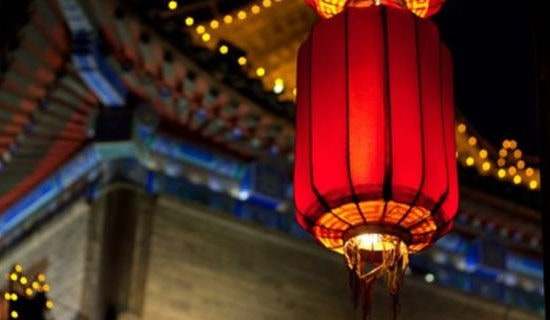有关春节的资料英文版
春节是中国民间最隆重最富有特色的传统节日,也是最热闹的一个古老节日。那么有哪些英文版的内容呢?下面和小编一起来看看吧!

有关春节的资料英文版
I like the Chinese new year better than any other festival。 This is a time especially for rest and joy。 I need not study。 I wear good clothes and eat good food。 I have a good time from morning till night。 I am as happy as a king。
Lunar New Year , the most solemn of traditional Chinese folk festivals。 First day of the first lunar month in the traditional Chinese lunar calendar, known as the Moon, commonly known as "New Year" and "New Year。" The long history of the Spring Festival, which originated in the Shang period the year draws to a close servicemen and the memorial activities。 According to China's Lunar,
the first day of the first lunar month yen ancient name, Yuan—chen, a copy, is Emperor, the New Year Day, which is commonly known as Day of the Republic。 switch to the Gregorian calendar, the calendar on January 1 as New Year's Day, January 1st called the Lunar Spring Festival。
Spring festival is coming。Spring Festival is on the traditional Chinese festivals。People used to call it "the Lunar New Year"。It always starts between january the first and february the twentieth。
Shortly before the festival ,Chinese people are busy shopping 。 They buy vegetables,fish,meat and new clothes and many other things。They clean the houses and decorate them。
The Chinese New Year is a festival whose Chinese are most important。The history of the Chinese New Year is very long。Stanza front stick in an on the face the New Year's Day of the implied meaning of the yellow word in red paper in top send message by word and the god of wealth resembles with hang deep red lantern etc。。 The Chinese New Year is a close relatives the festival of the family reunion。
The not far a long distance in child that leave the house returns to the home。The family rounds to sit together a dumpling, use the dumpling symbol family reunion。The beginning of January is on thering is fiesta cooking stove etc。 rites before;In the stanza make New Year's visit the child New Year's Money, friend etc。
Its origin is ancient, but many believe the word Nian, which means "year", was the name of a beast that preyed on people on the eve of a new year。
In one legend, the beast, Nian, had the power to swallow up all the people in a village in one big bite。 Village people were very scared of Nian。
One day, an old man came to the villagers' rescue, offering to subdue Nian。 The old man asked Nian, "I know you can swallow people, but can you swallow other beasts of prey instead of people who are by no means your worthy opponents?"
Nian accepted the old man's challenge and swallowed the beasts that had harassed the villagers and their farm animals for years。
At the end of the legend, the old man disappeared riding off on Nian。 In this legend, the old man turned out to be an immortal god。
In the end, Nian is gone and the other beasts of prey are scared into hiding in the forests。 The villagers can once again enjoy their peaceful life。
The legend goes on to say before the old man left, he told the villagers to put red paper decorations on their windows and doors at each year's end in order to keep Nian away。
It is believed Nian is afraid of the color
The tradition of observing the conquest of Nian is carried on from generation to generation。 The term "Guo Nian", which means "Survive the Nian" became "Celebrate the Year" and the word "guo" in Chinese means both "pass over" and "observe"。
The custom of putting up red paper and lighting firecrackers to scare away Nian continues today。
【有关春节的资料英文版】相关文章:
春节手抄报资料英文版12-02
复活节资料英文版02-21
有关于春节的手抄报资料06-02
春节手抄报的春节习俗资料04-17
元旦的有关资料02-08
描写春节的手抄报资料05-22
春节的手抄报资料大全05-22
春节资料手抄报11-30
有关喜迎春节手抄报资料大全05-21
有关公关经理的简历范文英文版10-02
